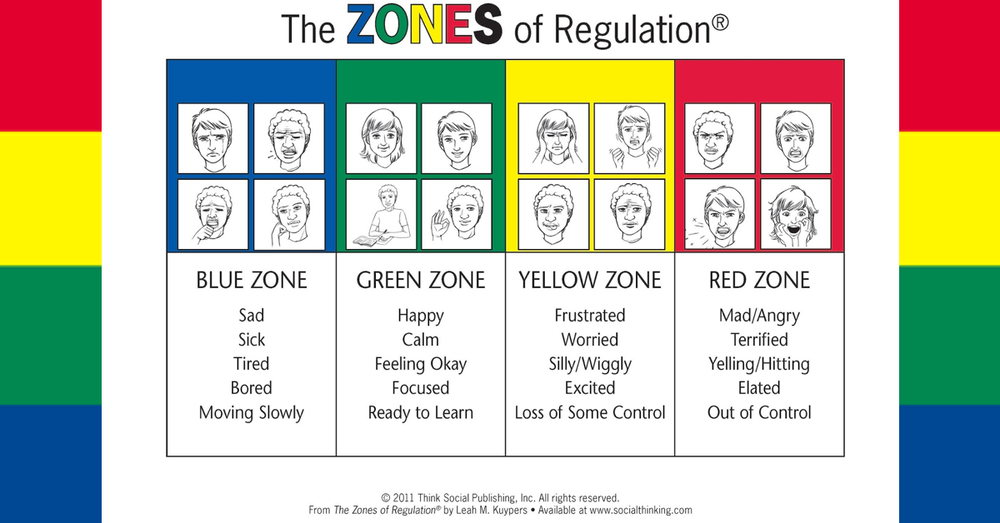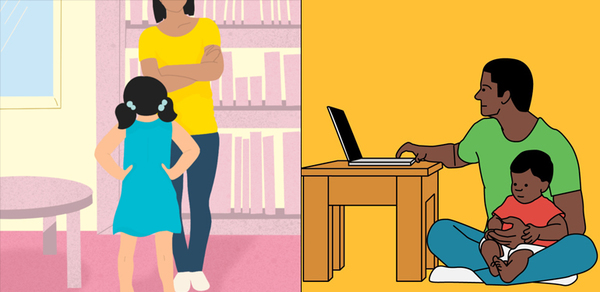The COVID-19 pandemic has had a negative impact on the lives of many families across the globe
Many school-going children, normal-developing, and those with special needs alike are confined in their home and are deprived from going to school physically.
Instead, they have been attending school via online mediums which are not as effective.
I’ve observed from our daily Zoom class sessions, the children seem to be more emotionally tired and wrecked. Many parents have voiced their concerns about their children’s behaviours at home.
Here are some easy strategies that you can practice with your child.
What are emotions?
Emotions play a tremendous role in the ‘fight, flight, or freeze’ survival mode of human nature.
It is the element that guided us through evolution and socialising with other humans. Without an effective regulation of emotions, most of us, in particular special needs children such as in the autism spectrum, learning disability, sensory processing disorder, are judged for their erratic behaviours as undesired and they are “hammered” for it.
Then they will be labelled as “bad/naughty/spoilt child”. In fact, it is just their weak socio-emotion regulation. A skill that can be learned through repetition, not born with.
How do they work?
It is like a WiFi connection. Imagine your fist as the brain, divided into the logic brain (the upper fingers clenched) and the emotional brain (the palm to the wrist).

When the fist is unclenched (a flat palm), the connection between the two brains weakens as the distance widens, hence we lose control of our emotions. As we can’t think logically, the emotion intensifies leading to undesired reactions such as anxiety, anger, task avoidance, etc.
Usually, children with special needs can’t control their emotions as well as typical children.
They see a small or big problem as a BIG PROBLEM. They are more attuned with their emotions hence they are more sensitive. As a result, they “act out” before thinking why they are feeling such.
It is their quick-fire way to convey how they feel. Children in the special needs spectrum as compared to an average child is intensified with their weak emotional regulation.
There are three strategies to calm the aroused little ones
These are rapid resets, narrative, and the zones of regulations. I discuss these in details below.
1. Rapid Resets
A quick and simple technique called the ‘Rapid Resets’ (RR) helps to de-escalate a stressed child, helps children to build resilience, calms the central nervous systems, and brings their “thinking brains” back online.
In times of the COVID-19 pandemic, work from home stress, family abuse/violence, racism, and religious discriminatory, empathy has taken a back seat. Stress and trauma trigger a response in the amygdala (the survival part of the brain that signals your body to fight, flight, or freeze) as it directs your emotions and behaviours.
When a person is triggered, many times they can’t be reached through conversation.
The RR method by Resources for Resilience, an American nonprofit organisation that conducts the training for teachers, has shown tremendous changes in their school environment.
It acts like a “first aid” to calm down a triggered child. However, it is vital that adults are to follow up and address the deeper issues as soon as they can, best right after the child has calmed down or a day after as the event is still very recent to recall. Getting their brains back “online” (calm and sensible) is a vital prerequisite for exploring the child’s challenges and making plans to help the child self-regulate in the future.
RR has aspects of mindfulness, a process of closely examining the bodily senses, which has substantial evidence and is prescribed by doctors for people with acute stress and trauma. RR are simple and quick strategies that incorporate paying close attention to the physical sensations, resulting in big responses.
Some of the simple strategies of the Rapid Resets are:
Push a wall: As the child pushes the wall, get him/her to feel the force channelling from his/her body to his/her hands then to the wall. Pushing all the unhelpful emotions out of the body system, leaving only calm and relaxed feelings.
Take a mindful walk: While walking, focus on the breathing rate, look and be aware of the sights and sounds of the environment. As the breathing rate slows down with every step taken, the muscles in the body relax and the mind gets calmer.
Take a mindful sip of water: Feel the motion of the water entering into the body. How does it feel as it passes over the lips? Is it cool or warm? Does it have a texture?
Singing or humming: Focus on the words sung or the sounds hummed, feeling the audio vibrations made in the mouth and throat. How does it feel? Is it quick-paced or slow-paced?
Do heavy work: The pressure would “ground” the central nervous system to calm down.
“Calm down” corner with visuals and words of emotions: To support children who are yet to articulate their emotions or are non-verbal; then the adult can guide them through.
After applying the method, you can reconnect with the child in a calm and sensible manner. Then you and the child can discuss and make an effective plan to tackle future triggers or reactive behaviours. When approaching the child, stay calm in order to avoid exacerbating the triggers the child may be experiencing.
For example, if the adult showed up to the triggered child in an escalated/aroused state, the child can sense it and respond even more adversely.
The method is not only beneficial to children but equally to adults as we have a more matured and controlled regulation than them. When we are calm, then the child would get calm too with the right guidance.
2. Narrative, the Inuit way
They scream at you, beat you, push you, bite you, hurt you in any way, in return you punish them by giving them time-out, physical punishment or raising your voice at them. Unfortunately, they will not learn from their undesired behaviours.
The Inuits have an age-old method in teaching the children to regulate their emotions. Rather than getting angry at them for having those undesired emotions, find out what is upsetting them so that a plan can be used to further prevent the problem from escalating.
Their secret is telling stories. For tens of thousands of years, it has been a key way the Inuits teach children about values and how to behave. Studies have shown that children learn more effectively through narratives and explanation.
Stories by nature bring meaning and interesting elements that are relatable. On top of that, the element of fun in stories adds a deeper emotional sense to the lesson taught.
For example, teaching friendship to your child through stories such as Peter Pan, Harry Potter, and more. The importance of storytelling and role-playing in children’s socio-emotional growth is to guide the child to develop rational thinking and self-control through the experiences.
Simple steps to raise a calm headed child:
– Wait till everyone is calm as it develops self-reflection and self-control.
– In a peaceful moment, go over what happened with your child through storytelling or using stuffed dolls to role play.
– Keep the child involved by asking many questions.
For example, if the child has a hitting problem, you might stop midway through the puppet show and ask, “Bobby wants to hit right now. Should he?” Then he will think, “What is the good choice to make?”. The parent then doesn’t scold or yell but instead acts out the consequences and explains how it hurts them. It helps them to develop perspective thinking and at the same time resolving the best strategy in regulating their emotions.
– Be sure to keep it fun as fantasy play offers an abundance of opportunities to teach children proper behaviour.
– Repeat the drama from time to time until the misbehaviour ends.
Children learn better and quicker through play as it is their “work”. That is how they learn to make sense of the world and their experiences.
3. Zones of Regulations
This is an easy tool created by Leah Kuypers for children to identify the basic emotions so that they can verbalise to an adult who can then guide them through the regulation process.
In this method, you need to start by learning what the problem with the attached emotion is and then follow by making an actionable plan to solve the problem.

At the end of the day, frustration in children should not be interpreted as misbehaviour, particularly children in the special-needs spectrum as their feelings are starkly intensified with weak emotional regulation
Children simply need the right guidance from the right people to regulate their emotions and to function effectively in our confusing and sometimes chaotic social world, especially now with the COVID-19 pandemic.
So with the right strategies, tools and knowledge, rather than obscuring and abstracting the concept of emotions, children may function as calmly and normally as us adults.
These strategies are also good for children’s overall wellbeing and help direct them away from depression, anxiety, or childhood traumas.


